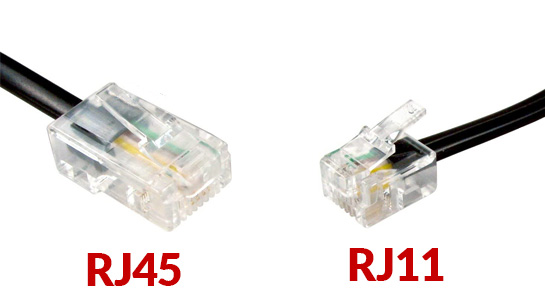Since the old days of analogue telephones and faxes, cables and connectors have been an integral part of a network communication. By now, everyone has seen an RJ45 connector, it’s become an integral part of any home/business. RJ stands for Registered Jack and 45 is the industry standard number assigned to the interface. As the numbers suggest, RJ11 is much older than the later. With the advances in internet technologies, the importance of data comms apart from voice has grown, especially with the demand for private business networks.
An RJ45 plug is at the end of RJ45 Cable and connects to an RJ45 jack. The same applies to RJ11 only using their corresponding items. Visually you’ll be able to see that the RJ45 is a lot wider as it’s composed of eight wires whilst the RJ11 only has four. Despite the similarity in connectors and the fact they come from the same RJ family, you shouldn’t assume them as interchangeable. If you attempt to plug an RJ11 port into an RJ45 port it can potentially damage the equipment.
APPLICATIONS
RJ45: Commonly used in LAN/ ADSL connections. Commonly used with Computers, Networks, Telecom, and automation. RJ45 has two standards for their connectors, T568A and T568B. Despite T568B being the more common standard, it is important to check as pin colours change.
Example: pin #1 is white with an orange stripe on the T568B, versus white with a green stripe on the 7568A.
RJ11: Commonly used in analogue telephony/ voice. Nowadays its most commonly used to connect modems and is still used in landlines.
CONCLUSION
RJ45 Connectors with magnetics differ from RJ11 connectors in applications and should not be mixed up. Luckily, they’re easy to differentiate due to the wider width of RJ45.


